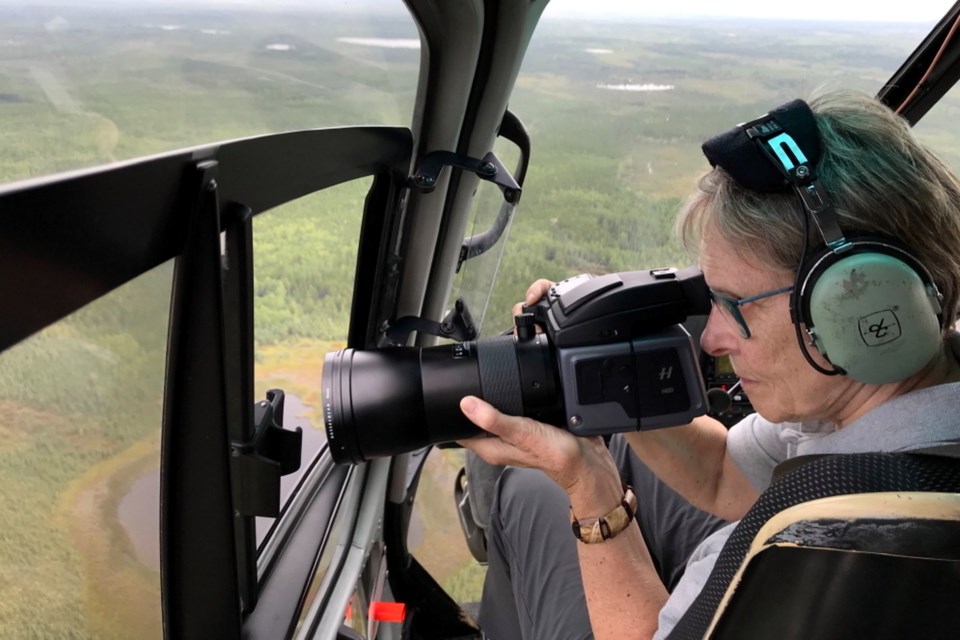Canada’s first woman to go to space is still living out her passion for flight – but in an entirely unique and environmentally-driven way.
For the better part of the decade, the Sault’s Dr. Roberta Bondar and her team at the Roberta Bondar Foundation have travelled all over the world photographing and documenting the migratory patterns and habitats of a variety of threatened and endangered species of birds.
Bondar's research project, called the AMASS (Avian Migration Aerial, Surface, Space) or ‘Space for Birds,’ collaborates with NASA to track the pathways of seven unique avian species from the ground, air, and space.
The retired astronaut says the idea of the project, which will produce a number of publications and exhibits for the public to view their findings, will be to connect people to the planet and natural environment in a meaningful way.
“It’s an inspirational message,” she says. “This is to be some way of making people be inspired by the feats these birds go through in order to survive, and what we can do to help them continue to live.”
“We want to give people that sense of exploration and discovery to try to share what astronauts see. Although it’s not quite the same impact as being there and seeing it in three dimensions, it’s trying to shape people into thinking about the earth as a planet and the life that’s on it.”
When the idea to begin AMASS was sparked in the early 2010’s, Bondar thought it would be interesting to look at these birds from altitude.
She says her foundation has sent the space station coordinates of some of the areas they’re interested in, and NASA has since photographed and gone through thousands of images taken from high above the earth’s surface.
“We gave them all kinds of constraints,” she says. “Some photos we wanted the edge of the earth in it, others we didn’t want straight down views all the time. We also wanted high oblique shots and certain percentages of clouds, light, and sun.”
Bondar says while the photo taking is undoubtedly important, it’s how they arrange their findings and tell a story that makes their project an impactful one for readers and observers.
“It’s one thing to look at a book of pretty pictures, but it’s quite another one to have it tell a story,” she says. “And it’s that story that NASA was interested in and what we’re interested in.”
Bondar’s migratory bird work has taken her team to six continents and focuses on seven global species of birds that face endangerment, including the Whooping Crane, Lesser Flamingo, Black-tailed Godwit, Piping Plover, Curlew Sandpiper, Red Knot, and Sprague’s Pipit.
“It’s not very many species when you consider how many birds there are,” she says. “These species are symbolic of birds that migrate, the habitats they need, and how things change.”
Bondar is hoping her team can go to the Arctic next year where they’ll photograph some of the nesting grounds there.
Currently studying the end of a migratory period in the gulf coast of Florida, Bondar will be returning to Canada in the next couple of weeks.
The retired neurologist says she has come to learn of many analogies that the Space for Birds project has with space exploration.
“For me, it’s about looking at life and how life uses a planet, how flexible these creatures are, and how flexible life is on this planet to be able to shift,” she says. “It’s only 10,000 years ago since we had the last ice age. Our lifetime is so short that we have a really short memory, and so we think the earth has stopped evolving for us.”
An outdoors enthusiast growing up, Bondar has many fond memories of being in the Sault and listening to the blue jays sing and feeding the chickadees with one hand.
That nostalgic connection paired with her passion for flight has been demonstrated through her lifetime of environmental work.
“When I was in space, I didn’t hear bird songs,” she says. “I missed the sounds that weren’t mechanical and weren’t human made.”
“There are a lot of people who are very happy inside a city and don’t care about birds or don’t think they hear birds. But the minute they don’t hear birds, they realize there’s something missing that’s associated with some emotion they have.”
Missing her hometown the most during the spring and fall seasons, Bondar will soon return to the Sault where she will present a photographic art exhibition of her international work at the Art Gallery of Algoma later this year.
Unable to make as many visits to the Sault as she’d like to, Bondar says it’s always a treat to return to her roots.
“My mother was a huge supporter of the Art Gallery growing up,” she says. “Being able to go downtown and see the extraordinary things the Sault has done to maintain the waterfront and have a beautiful walkway for the residents in the city and the visitors I think is wonderful.”
